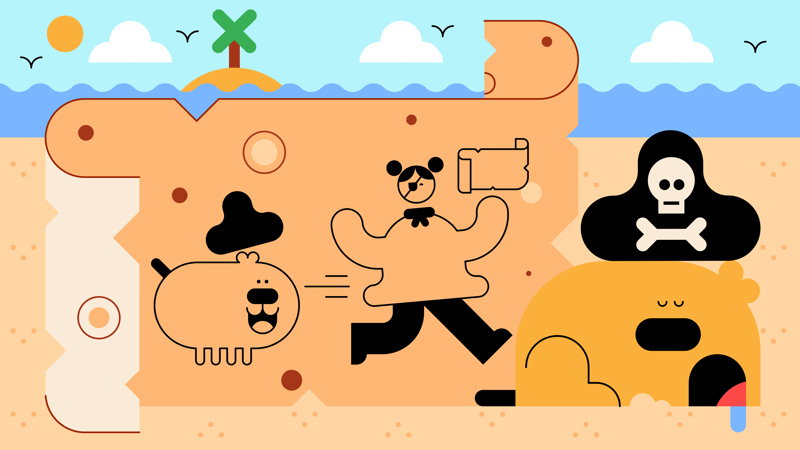
Don’t wake the pirate
You’ll need
- Scrap paper
Before you begin
- Use the safety checklist to help you plan and risk assess your activity. Additional help to carry out your risk assessment, including examples can be found here. Don’t forget to make sure all young people and adults involved in the activity know how to take part safely.
- Make sure you’ll have enough helpers for each team to have one. You may need some parents and carers to help out if you’re short on helpers.
- Have a printed or hand drawn copy of a treasure map for the pirate to look after.
- You could put a hoop or marker in the middle of the meeting space to show where the pirate should sit.
- You could choose to set out markers, such as cones, for each person sat in the circle so they know where to go back to.
Play the game
- Choose one person to be the pirate. They should sit in the middle of the space. Everyone else should sit in circle around the pirate.
- Put a piece of paper behind the pirate. This is the pirate’s map. The pirate should close their eyes and pretend to go to sleep.
- Now choose a player in the circle to get the map. They should point to a player without making any noise.
- The player who was chosen to get the map should silently get up, get the map and sneak back to their place.
- Meanwhile, the pirate should listen out for any noise. If they think they hear the player moving to get their map, they should point to where they think the player is and open their eyes.
- If the player is there, they should run away. They should run around the outside of circle once and then aim to sit back down in their place. The pirate should chase them and try to catch them – they have to run around the circle once too.
- If the player gets the map without being caught, they’re the winner.
- Everyone should play again. Keep playing, but aim to swap the pirate every two or three turns (or whenever someone gets caught!). Ideally, everyone should have a turn at trying to get the map.
Reflection
This game needed everyone to move really carefully – it wasn’t just about being fast! How did people move carefully? People should try to describe how they moved in as much detail as possible. Moving so carefully can feel like hard work, and people probably had to focus a lot on what their bodies were doing. Did people find it difficult to keep concentrating on being quiet? What about the pirate – was it hard to listen?
This isn’t a game that everyone can win – either the pirate catches the player, or the player gets their map. Hopefully people kept going and encouraging each other, and didn’t give up after one turn. Did people change what they did to succeed? People may have found that some techniques, such as making noises to distract the pirate or running very fast, worked better than others.
Safety
All activities must be safely managed. You must complete a thorough risk assessment and take appropriate steps to reduce risk. Use the safety checklist to help you plan and risk assess your activity. Always get approval for the activity, and have suitable supervision and an InTouch process.
- Active games
The game area should be free of hazards. Explain the rules of the game clearly and have a clear way to communicate that the game must stop when needed. Take a look at our guidance on running active games safely.
Change the item behind the pirate – the bigger or noisier it is, the harder it will be for a player to get away with it! Keys are tricky to move without making noise.
You could remove the need for people to run around the outside of the circle if you need to.
All Scout activities should be inclusive and accessible.
People who get the map could choose the next person to go, so everyone’s leading themselves. An adult might need to keep an eye on the game to make sure it’s fair.

